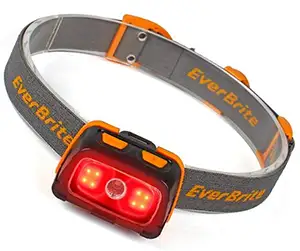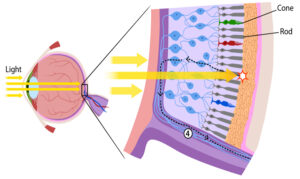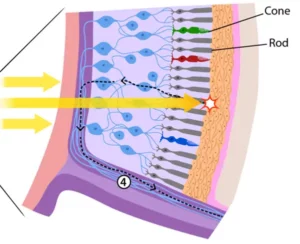Nighttime Drone Flight Operations
Lesson 1.1: Nighttime Operations of an sUAS
§ 107.29 Operations at Night
As of April 21, 2021, certified remote pilots may now fly at night without obtaining a waiver from the FAA providing the following criteria are met:
- The remote pilot in command of the small unmanned aircraft has completed an initial knowledge test or training as applicable under § 107.65
after March 1, 2021. - The small unmanned aircraft has lighted anti-collision lighting visible for at least 3 statute miles that has a flash rate sufficient to avoid a collision. The remote pilot in command may reduce the intensity of, but may not extinguish, the anti-collision lighting if he or she determines that, because of operating conditions, it would be in the interest-of-safety to do so.
- No person may operate a small unmanned aircraft system during periods of civil twilight unless the small unmanned aircraft has lighted anti-collision lighting visible for at least 3 statute miles that has a flash rate sufficient to avoid a collision.
- After May 17, 2021, no person may operate a small unmanned aircraft system at night in accordance with a certificate of waiver issued prior to March 16, 2021 under § 107.200. The certificates of waiver issued prior to March 16, 2021 under § 107.200 that authorize deviation from § 107.29 terminate on May 17, 2021.
Nighttime Operations
In the continental United States, evening civil twilight is the period-of-time that’s 30 minutes after sunset, and morning civil twilight is the period-of-time 30 minutes prior to sunrise. In Alaska, the definition of civil twilight is described in The Air Almanac.
If you’re flying in that 30-minute civil twilight period, your aircraft must be equipped with anti-collision lights that are capable of being visible for at least statute 3 miles. The small blinking lights that are pre-installed on most drones do not meet this 3-statue mile requirement and we recommend anti-collision lights made by companies similar to LumeCube.com.


Dark Adaptation & Bright Lights
Unfortunately, human eyesight is not optimized for night vision as it takes about 30 minutes for our eyesight to fully adapt to darkness. And the time it takes us to adjust to this darkness can take longer depending on the amount of light in the environment you may have just previously been exposed to.
You’ve likely experienced the impact of sudden bright light and how that can greatly diminish your eyes’ dark adaptation. That bright light leaves your night vision compromised and at risk while your eyes begin to adjust again to the dark. The adaptation process effectively starts all over again.
Whenever a night flight is planned, the FAA encourages remote pilots and crew members to wear neutral density glasses or N-15 equivalent filter lenses if they have been working in bright sunlight during the day. Doing so increases the rate of dark adaptation at night and improves night visual sensitivity.
If you need a light source when preparing your nighttime pre-flight checklist, consider using a red filtered light source as red light does not affect the eyes and their dark adaptation as great as white light does.
Also try to avoid high-intensity lighted areas and fly in a manner where any bright lights are to your back and behind you. If you’re going to fly at night, then try to fly completely in the dark.
Scanning Techniques
Certified remote pilots will remember scanning techniques from their initial exam and scanning at night is very similar. It’s important to scan effectively by choosing a direction and scan the sky in 30-degree increments around the object you need to focus on. You’re basically using a technique called “off-center viewing.” The duration of each pause should not last longer than 2 to 3 seconds and when moving from one viewing point to the next, remote pilots should overlap the previous field of view by 10 degrees.

With off-center viewing, you’re not looking directly at an object but rather, you’re looking 10 degrees above, below, or to either side of the object. In this manner, the remote pilot’s peripheral vision is maintaining contact with an object; aircraft, drone, etc.
When using off-center vision, you’ll only be able to get that clarity for 2-3 seconds because your eyes’ rods, which are one of two types of photoreceptive cells in the retina that are responsible for gray color and peripherical vision, reach a photochemical equilibrium that prevents any further response until the scene changes. However, after approximately 30 minutes of darkness, the rods can become 100,000 times more sensitive to light than they were in a lighted area.
How the Eye Functions
Our vision is subject to limitations such as blind spots and illusions, and our eyes are a lot more prone to these limitations at night. We remember from grade school that the eye functions a lot like a camera where have an aperture, a lens, a mechanism for focusing, and a surface for registering images. In the retina, you have two types of light-sensitive cells that converts light into electrical impulses for our brain interpret and these two types of light-sensitive cells are rods and cones.

Cones are responsible for color vision and are concentrated highest in the fovea, an area in the back of the retina right in the center of the field of vision. Cones and their associated nerves work better in high light levels, but not in dim light.
Rods are unable to discern color but are very sensitive at low-light levels and much better than cones at detecting movement and providing vision in dim light.
There’s mostly cones at the very center of your field of vision that are working very well in a lot of light but at night, this area basically becomes a blind spot as cones just don’t work as well and your eyes must now rely more heavily on the rods which are responsible for the eye’s peripheral vision.

Unfortunately, rods are easily overwhelmed by large amounts of light so they take longer to reset and adapt to the dark again – again, up to 30 minutes.
Therefore, using off-center viewing at night is much safer and more beneficial because your central vision isn’t as strong.
It’s estimated that once fully adapted to darkness, your eyes’ rods are 10,000 times more sensitive to light than the cones making them the primary receptors for night vision.
Five Visual Illusions to Know
Autokinesis is a kind of phantom motion that is caused by staring at a single point of light against a dark background for more than a few seconds. After about 8-10 seconds, the light appears to move on its own. To prevent this illusion, focus the eyes on objects at varying distances and avoid fixating on one source of light for more than 8-10 seconds (visual scanning techniques).
Fascination/Fixation occurs when pilots ignore orientation cues and fix their attention on a goal or an object such as becoming fixated on one task and forgetting about situational awareness.
Reversible Perspective Illusion is an inability to determine if an object is moving towards you or away from you. At night, manned aircraft may appear to be moving away from you when it’s actually moving towards you. To determine the direction of flight, remote pilots should observe aircraft lights and their relative position to the horizon.
Size/Distance Illusion occurs when a dimly lit object appear to be further away, and brightly lit objects appear closer. The size/distance illusion results from viewing a source of light that is increasing or decreasing in brightness and remote pilots may confuse the light as either moving towards you or away from you.
Flicker Vertigo is a light source flickering at a rate between 4 and 20 cycles per second, which produce unpleasant and dangerous reactions such as nausea, vertigo, or vomiting. On rare occasions, convulsions and unconsciousness may also occur. Remember, proper nighttime scanning techniques can prevent flicker vertigo.
Exterior Nighttime Lighting on Aircraft
When flying at night, it is challenging to differentiate the direction a manned aircraft is traveling; is the plane flying towards you or away from you? Fortunately, aircraft are equipped with blinking lights that quickly allows you to decern the direction.

- Red blinking light on left wing or left side of helicopter.
- Green blinking light on right wing or right side of helicopter.
- White blinking light on rear or aircraft.
- On commercial airlines, you may see two white blinking lights on either side of the horizontal stabilizer, or “rear wing.”
Physiological Conditions Which May Degrade Night Vision:
- Alcohol consumption.
- Cigarette smoking. Decreases visual sensitivity by increasing levels of carbon monoxide which results in hypoxia. Hypoxia directly affects your peripheral vision and dark adaptation.
- Hypoglycemia & Nutritional Deficiency. Skipping meals can cause low blood sugar which can impair night flight performance and an insufficient consumption of vitamin A may also impair night vision.
Congratulations! You’ve finished Lesson 1.1 on Nighttime sUAS Flight Operations. Be sure to click the COMPLETE button below to register your progress.
1. A light flickering at a rate between 4 and 20 cycles per second can cause _____:
2. You see a manned airplane flying at night with a green flashing light on the left and a red flashing light on the right. Which direction is the aircraft headed?
3. When scanning the sky at night in 30° increments, you should never pause for more than _____ seconds to avoid night vision limitations.
4. Off-center viewing is when the remote pilot and/or crew members are:
5. Our eyes don’t work well at night when looking directly at an object, and that’s because _____ are concentrated in the center of your retina and these only work well in bright light.
6. On average, how much time does it take for your eyes to fully adapt to darkness?

